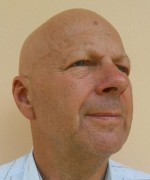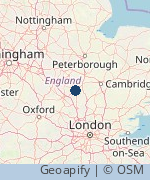GREAT EASTERN RAILWAY – ‘’rarely other than idiosyncratic’’
Ray Schofield
- Region:
- London
- Notice Period:
- Short (maybe less than one month's notice)
- Type:
- Hobby
- Fee:
- Unknown
- Category:
- Travel
- Updated:
- 4th October 2021
- Tagged:
- Trains | Travel | East Anglia
Following the openings, in successive years, of the significant London main line stations at London Bridge, Euston and then Paddington, there followed a minor station in Mile End as the terminus of a railway planned to link the capital to Norwich via Colchester and Ipswich. Another early railway was to use the same terminus, but connect London to York via Cambridge and Lincoln. This second line ground to a halt halfway to Cambridge, but was piggy-backed by the first, who used it to gain Norwich via Cambridge and Ely, so deserting the shorter route via Ipswich. A rival concern from Ipswich then rapidly completed the direct route. Not only did East Anglia then have two disjointed main line routes to Norwich, but also other independent connections and a plethora of idiosyncratic rural branch lines, all of which amalgamated to form the Great Eastern and to soon after open a prominent terminus in the City. The story is told, and many of the routes are travelled in this presentation, one of a trilogy railways in the ‘Eastern Region’.
Views: 1123 | Enquiries: 2About Ray Schofield
Retired Chartered Engineer who currently undertakes some tour management for UK worldwide rail travel company. Widely travelled, much of which is independent, around the 5 continents of the world plus Aus and NZ. Visited parts that most others haven’t e.g., North Korea, Pakistan, Eritrea, Paraguay, Syria ....... Talks are generally associated with trains (mostly nostalgic steam) the railways themselves and associated historical aspects. Talks tailored to audience, whether knowledgeable on subject or not and using primarily own photo material and research from own comprehensive specialised library. A talk could be the development of railways in your own area, or another area c/w with anecdotes. It could be a certain part of the world e.g. Indian sub-continent, or All quiet on the Western Front, a short talk on the trench railways used by the 4 main protagonists in this war theatre.
Other Talks on SpeakerNet by Ray Schofield
- Action & Articulation - the story of articulated steam locomotives
- Fell & Funicular, Spirals & Switchbacks and Many More Means of Rail Ascendency
- North of the bordr from the Tweed to Thurso
- The Great Northern Railway and King's Cross Station
- the Great Central Railway - Rapid Travel in Luxury
- All quiet (or maybe not) on the Western Front
- From Carlisle to Kittybrewster (that's Aberdeen)
- North of the Border: From Canal to Craigellachie
Send a message to the speaker
If you are interested in this talk and wish to contact the speaker, please complete the following form:


